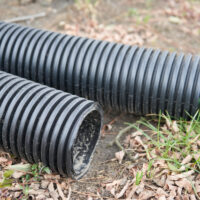Blog
View All Blog Postings
Taking a Closer Look!
 Sometimes you just have to get nose to nose with a problem area on a building façade to figure out why it is leaking or cracking. So our staff routinely finds themselves in the basket of a boom lift to check out a building. We have offered to take Property Managers with us to see the problems up close, but no one has taken us up on the offer. The view is great from 12-stories up in a small basket. Our staff is not afraid of heights so it is OK if you are. We’ll let you know what we find.
Sometimes you just have to get nose to nose with a problem area on a building façade to figure out why it is leaking or cracking. So our staff routinely finds themselves in the basket of a boom lift to check out a building. We have offered to take Property Managers with us to see the problems up close, but no one has taken us up on the offer. The view is great from 12-stories up in a small basket. Our staff is not afraid of heights so it is OK if you are. We’ll let you know what we find.
Dusting Off Our Drum
We’ve beat this drum before but some things are worth repeating. When  products claim to be breakthrough or cutting-edge technology, it usually means they’re so new they have no history of performance in actual field conditions. Buzzwords can vary (micro and nano are currently en vogue), but unless someone can explain to me why a micro anything is better that a non-micro something, I’m skeptical. I suspect there’s more psychology that physics at play there. Nano-tubes for example are exotic forms of a very mundane material (carbon). They exhibit some very unusual (and useful) properties that are too complicated for most (myself included) to fully understand. As such, they must be special.
products claim to be breakthrough or cutting-edge technology, it usually means they’re so new they have no history of performance in actual field conditions. Buzzwords can vary (micro and nano are currently en vogue), but unless someone can explain to me why a micro anything is better that a non-micro something, I’m skeptical. I suspect there’s more psychology that physics at play there. Nano-tubes for example are exotic forms of a very mundane material (carbon). They exhibit some very unusual (and useful) properties that are too complicated for most (myself included) to fully understand. As such, they must be special.
That’s not to say all new products are worthless. After all, every product had to start as new. But before you spend a lot of money on one; be aware of its limitations. An “economical” or “simple” roof repair (tape, spray, goo-in-a-can) may be useful for an emergency, short-term fix and not much else.
Snake oil salesmen have been around for a long time, so they must be pretty good at selling their wares. In the early days, their potions, elixirs and decoctions at least had enough opium and alcohol in them to keep you from knowing you were being had.
If you’ve had any experience (good or bad) with rejuvenators, repair tapes or sprays or any other unorthodox products, please share them with us.
BIG INTRODUCTIONS!
You may remember a month or so ago I introduced you to one of our newest engineer and told of her upcoming nuptials. Well, the big day came and what a lovely day it was. Please allow me to introduce….Mrs. Alicia Afroilan (Walker).
Most of us thought Tom Dugger, one of ETC’s longest staff members, would remain a confirmed bachlor forever; however we were wrong. One day life decided to throw Tom the most perfect woman and together they had the most perfect baby. Now how’s that for a perfect ending! Please allow me to introduce Tom and his lovely daughter Ella.
 Days after purchasing her very first house, Lorena Michel, decided a house was not a home without a puppy. The problem was when she went to pick-out her loyal companion, she couldn’t say “no” to just one! Please allow me to introduce you to the newest members of the ETC team.…poopie & wee-wee. I do hope they out grow their nicknames soon. Lorena’s new house and roommates will be thankful!!
Days after purchasing her very first house, Lorena Michel, decided a house was not a home without a puppy. The problem was when she went to pick-out her loyal companion, she couldn’t say “no” to just one! Please allow me to introduce you to the newest members of the ETC team.…poopie & wee-wee. I do hope they out grow their nicknames soon. Lorena’s new house and roommates will be thankful!!
BEST WISHES TO ALL OF YOU!!
Like Father…Like Daughter
This father and daughter team are out to make a change and we are proud to support their efforts!
It is now official… Chris Carlson of ETC, was elected President of the Baltimore-Washington Chapter of the ICRI (International Concrete Repair Institute) for the 2011 Calendar year.
The BW-ICRI Chapter has the largest membership of any chapter in the world with about 160 representatives of local consulting firms, construction companies, material suppliers, and property managers. Our local chapter includes many of the founders of the concrete repair industry including many nationally recognized industry leaders. The chapter is actively involved in community outreach through work with Habitat for Humanity, Carver Vocational Technical High School, and last year awarded eight scholarships to deserving college students as well as those in the industry seeking to improve their skills.
The Chapter has been recognized nationally as the Chapter of the Year many times (most recently last year) and Chris hopes to continue this tradition of excellence and leadership in the industry.
We’d also like to give mention to Chris’s daughter Molly, who will be traveling to Kenya to work at an orphanage in June 2011. One of her intended projects is to provide basic computer training to the children. She is hoping to take many donated laptops to be left for their use. If anyone has old laptops they would consider donating, please let me know (nothing special, just operable). Receive a tax deduction while helping orphans in Kenya.
Preventing a Building Collapse
 Several concrete columns in the basement of a local 11-story apartment building were noted by Management as being severely cracked. A Contractor was hired to make the repairs to these columns that supported all floors of the living spaces above. Heavy duty shoring was installed so that the “Jenga-like” repair process could be safely performed and the building could remain in service. After the deteriorated concrete was removed, we found severely corroded steel reinforcement that indicated that the structural integrity of the columns were severely compromised. The repairs were performed in the nick of time.
Several concrete columns in the basement of a local 11-story apartment building were noted by Management as being severely cracked. A Contractor was hired to make the repairs to these columns that supported all floors of the living spaces above. Heavy duty shoring was installed so that the “Jenga-like” repair process could be safely performed and the building could remain in service. After the deteriorated concrete was removed, we found severely corroded steel reinforcement that indicated that the structural integrity of the columns were severely compromised. The repairs were performed in the nick of time.
ETC+Terps = Perfect Match
Several of our staff attended the University of Maryland Career Fair in  College Park, MD. It was a pleasure talking with such exceptionally strong candidates for full time employment, as well as internships. In attendance for ETC were two Maryland University Alumni, one in which came to us as a young intern several years ago. We are hopeful this year to find another perfect match for our company!
College Park, MD. It was a pleasure talking with such exceptionally strong candidates for full time employment, as well as internships. In attendance for ETC were two Maryland University Alumni, one in which came to us as a young intern several years ago. We are hopeful this year to find another perfect match for our company!
Welcome Home ETC!
 Due to our expanding staff, ETC’s Maryland office has found a new home! We are very excited to be into our larger space and somewhat settled. As most of you know, moving is NO FUN… no matter how much you’re looking forward to the new place. It has been a year long journey for us with construction & planning. We thank all of our clients and professional friends for your patience.
Due to our expanding staff, ETC’s Maryland office has found a new home! We are very excited to be into our larger space and somewhat settled. As most of you know, moving is NO FUN… no matter how much you’re looking forward to the new place. It has been a year long journey for us with construction & planning. We thank all of our clients and professional friends for your patience.
We hope you’ll come by and see us sometime. Our door is always open…well that is if you’re visiting between the hours of 8-5. No holidays!.
Seeing Red!
There are a number of tools available to help evaluate and correct building problems, particularly those related to moisture intrusion. Infrared scans are frequently used for checking roofs and exterior building walls This same technology is used to check for hot and cold spots in walls, electrical equipment, etc.
problems, particularly those related to moisture intrusion. Infrared scans are frequently used for checking roofs and exterior building walls This same technology is used to check for hot and cold spots in walls, electrical equipment, etc.
A side use of infrared cameras has been to survey interior finished surfaces for possible “hidden” water intrusion. Sometimes, these cameras can detect moisture in ceilings or walls even before there are visible signs of moisture or drywall damage on inside surfaces.
Smooth Start

1. Review scope of work with the contrator to make sure everyone undertands what work will take palce. Ask if posible change order items are anticipated and what the unit costs may be for additional work.
2. Understand what the contractor’s anticipated start and completion dates are for the entire job. Knowing the working hours and if weekend work will be allowed is also important
3. Identify storage, parking and work areas. Make sure the contractor understands his responsibility for keeping the areas clean and maintaining the security of his equipment and materials.
4. Make sure the contact person in the field as well, as the responsible person in the office, is identified in case problems arise. Have a list of all emergency numbers of key personnel prior to starting work.
5. Clairify whether the contractor will utilize certain facilities (such s water, electricity and/or restrooms) while working on the job.
6. Bonds, insurance certificates, building permits or any technical submittals should be obtained prior to starting work. The Contractor should be responsible for securing any state or local permits or insepctions.
7. Inspect property and document any existing damage prior to starting work to help protect all parties.
8. Understand who is responsible for connection or disconnection of mechanical systems.
9. Find out what warranties will be given from the contractor and/or manufacturer.
Use Caution With SIP Construction!
Structural insulated panels (SIP) are a prefabricated assembly of rigid foam insulation sandwiched between layers of structural boards, often oriented-strand board (OSB). These panels are used for walls, floors and roofs for 
While SIPs have been around for a long time, they are currently gaining a lot of attention and many home builders are making SIP panels a part of there regular construction or at least offer it as an option.
As with most anything, SIP construction has several pros and cons. On the pro side, they are very energy efficient, mechanically sound and quick to construct. On the other side, they are normally more expensive than conventional framing and the consequences of poor fabrication and/or defective installation can be extremely difficult to correct.
Caution needs to be used when deciding on SIP construction. The fabricators and installers must be properly trained to avoid severe problems. People involved with conventional, stick-built home construction are not qualified to perform SIP construction unless they receive the proper training. In addition, the cutting of holes in SIP panels (for skylights or other items) must be carefully reviewed to avoid compromising panel integrity.
Planning For a Tenant Build-out?

Most jurisdictions require a percentage of construction cost be allocated to upgrading the accessible route to the altered space. Many times this involves modifying the existing restroom facilities. Some ways to do this are:
1. Adding grab bars to toilets stalls (vertical grabs are now required);
2. Increasing stall size by reducing fixture count. Be careful to maintain an adequate fixture count to support occupant load; and
3. In extreme cases it may be necessary to enlarge the restroom by moving the end wall and will affect adjacent areas.
Many times this requirement is overlooked and can lead to delays in building permit issuance and increase design costs. Let us know if you need any help planning for future projects. Architect on staff!
Not Widely Known

* Synthetic trim is not a direct replacement for wood. PVC (even cellular PVC) experiences far more thermal movement than wood and attachment provisions could differ from wood, depending upon a number of factors. Manufacturers could require extra fasteners and adhesives for certain configurations.
* Synthetic trim won’t rot, but it can degrade when exposed to the elements. Painting is recommended for some and required for others and there are considerations apart from adhesion and compatibility issues. Because of the elevated thermal expansion of plastics, certain colors are not recommended for exterior applications. Dark colors absorb more thermal energy from sunlight and the resulting rise in temperature will exacerbate movement problems. White is generally the best choice.
*Synthetic (composite) decking will not usually have the same strength as wood and its span rating is usually reduced. If you replace wood with composite, it may be necessary to add floor joists or other support.
These are just a few things to consider when dealing with synthetics. You should always consult with the material manufacturer before using, modifying or treating these products.




